Links and Thoughts #7 (July 2024)
– personal
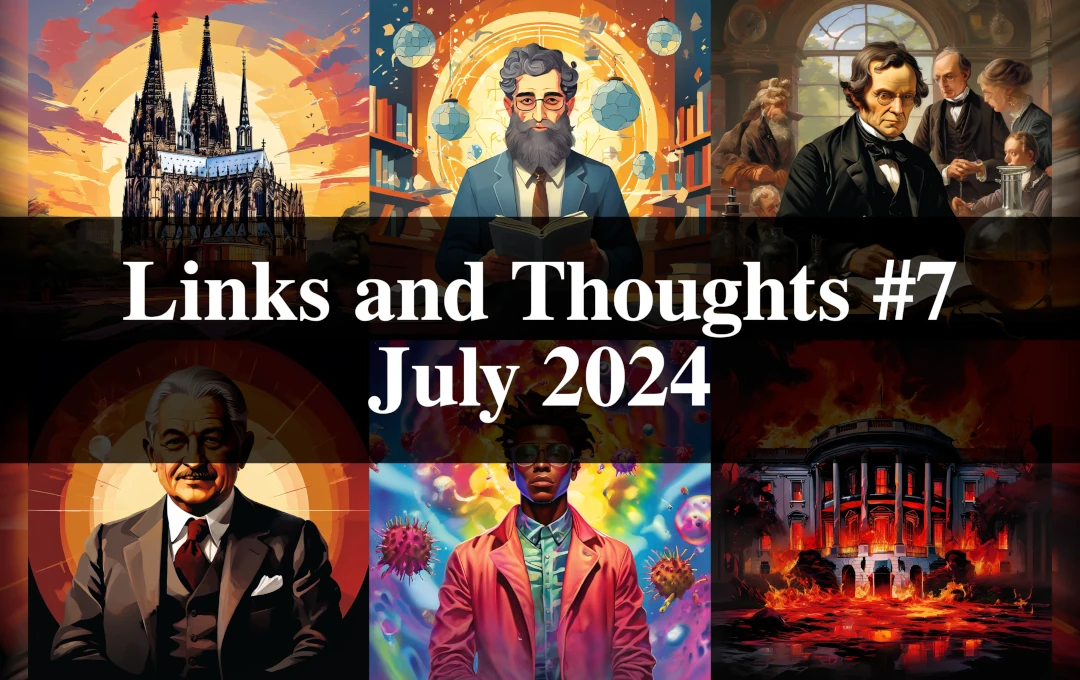
This month’s compilation brings an in-depth article about the historical rise of the West and another about the IQ of Jews in the West and in Israel, an overview of the geographical distribution of notable people in Europe from 1000 to 1850, an essay and presentation by an economist about the impact Ludwig von Mises’s Human Action had on him, an article using a theory of memetic evolution to explain the rise of modern progressivism or wokeness, an article explaining the origins and deficiencies of the concept of “cultural evolution,” an article explaining the evidence that immigration causes locals to flee high-productivity areas and the consequences of that, and a Mises University presentation by Thomas DiLorenzo arguing who were the three worst United States presidents according to him and why.
The Rise of the West
- Link to article
- Author: Inquisitive Bird
- Date: 2023-03-29
- Source: Patterns in Humanity (Substack)
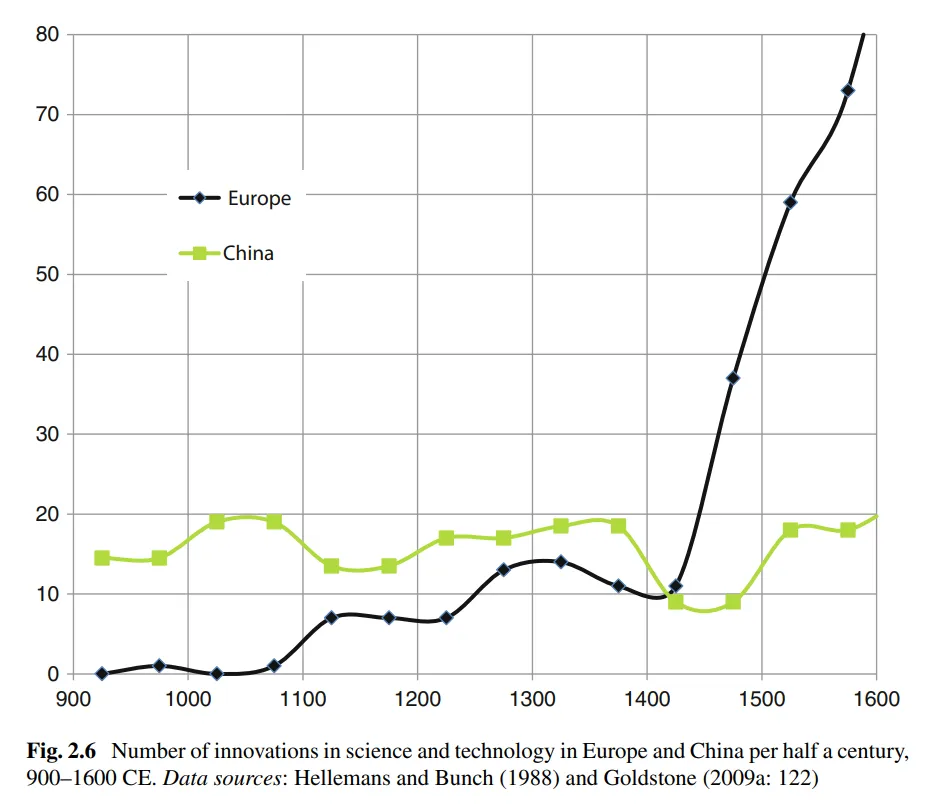
The author’s introductory paragraph summarizes the article perfectly, so I’ll just quote it directly:
I track the historical rise of West Europe by quantitatively analyzing the birth of notable people of science, and then I put it in context with other indicators of historical development. The data together show that West Europe had developmentally surpassed the rest of the world prior to 1500 A.D., before the establishment of overseas colonies or slavery. It is clear that the West’s rise to global prominence has deeper roots than often suspected.
The article’s account of the rise of Western Europe is consistent with the argument of libertarian historian Ralph Raico in his essay The European Miracle. In the essay, Raico explains that the particular reason for Europe’s unprecedented rise was its high degree of decentralization of power and interjurisdictional competition in the Middle Ages, which resulted in few restrictions on private property and commerce, as well as the development of modern market institutions.
Pinpointing Jewish IQ
- Link to article
- Author: Cremieux Recueil
- Date: 2023-12-28
- Source: Aporia Magazine (Substack)
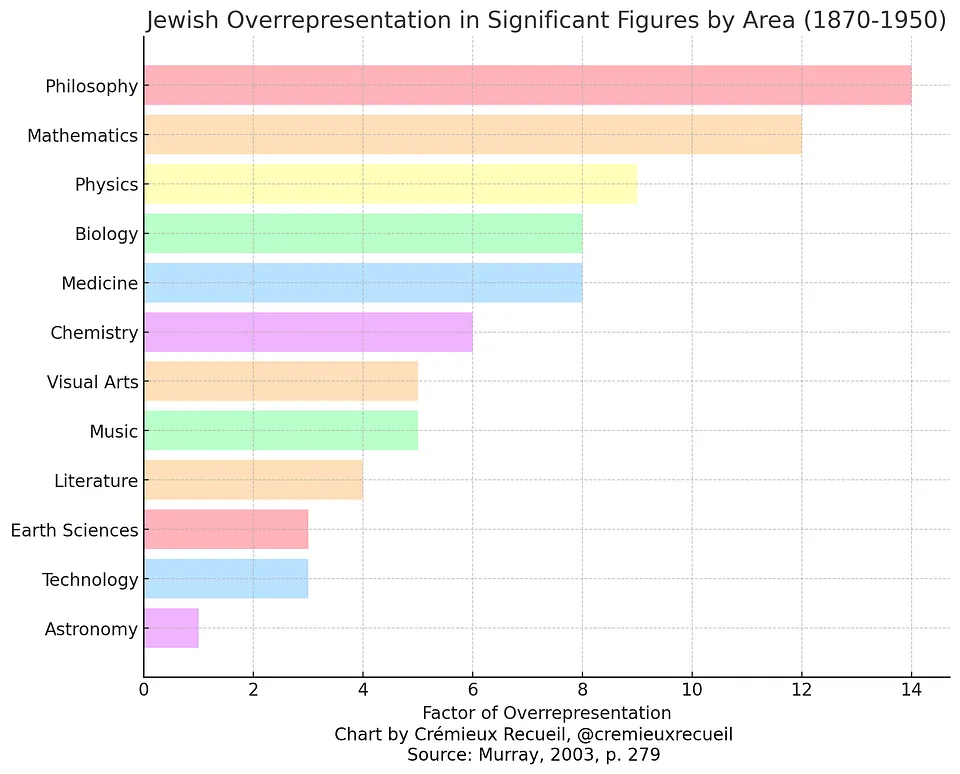
This article provides a comprehensive look at data from various sources about the IQ of Jewish people inside and outside of Israel. To summarize, here are the main takeaways:
- Based on several psychometric test results from the United States, Canada, and Great Britain, where Jews are overwhelmingly Ashkenazim, their average IQ must be somewhere between 110 and 113. This is consistent with Ashkenazi Jews’ overrepresentation in high-IQ professions and achievements.
- On the other hand, Israel is obviously the country with the most Jews, but most of them aren’t Ashkenazim: only about 31.8% of Israeli Jews are Ashkenazim, while 44.9% are Mizrahim, 12.4% are Soviets, 3% are Ethiopians, and 7.9% are mixed. This distribution of Jewish groups, plus the fact that Arabs are about 20% of its total population, explains why Israel’s average IQ, estimated from its PISA performance, is only about 92.
Notable People in Science, Europe 1000-1850
- Link to article
- Author: Inquisitive Bird
- Date: 2022-11-19
- Source: Patterns in Humanity (Substack)
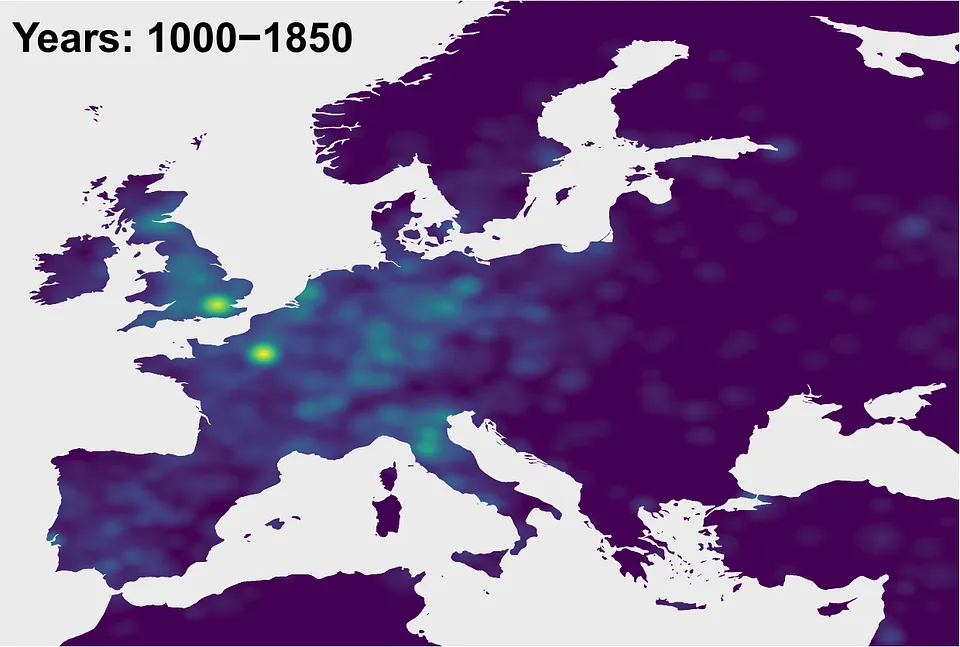
Again, I’ll use the author’s introductory paragraph as the summary for this entry:
Based on a publicly available dataset, I track the European geographical distribution of notable scientists, philosophers, and other intellectuals from 1000 AD until the Industrial Revolution. Here I give a brief overview of the analysis and then I list the particularly noteworthy individuals within each period.
The Book that Made Me an Economist
- Link to article
- Link to video
- Author: Shawn Ritenour
- Date: 2024-06-30
- Sources:
- The Misesian 1, no. 3 (May / June 2024). Ludwig von Mises Institute (LvMI).
- YouTube video of the presentation at the LvMI’s 2024 Human Action Conference.

This essay and corresponding presentation by economist Shawn Ritenour are a reflection and commemoration of Human Action (1949), the magnum opus of Austrian economist Ludwig von Mises, on the occasion of the 75th anniversary of its publication. Ritenour explains the importance of Human Action for economics in general and for his own intellectual career, and how its groundbreaking, rigurously systematic causal-realist approach provides the proper foundations for true economic science, superior to present and past alternative theories.
I particularly liked the latter half of the essay, in which Ritenour provides one of the most readable yet thorough recaps of Mises’s economic theory and its implications for the topic of economic development. I highly encourage reading it from beginning to end, so I’ll just quote the final paragraph:
In short, one of the great lessons of Mises’s Human Action is that the institutions of the free society—private property and sound money—make up the environment enabling economic progress, and hence, human flourishing.
Memetic Evolution and Progressivism
- Link to article
- Author: Arctotherium
- Date: 2022-01-15
- Source: Not With a Bang (Substack)
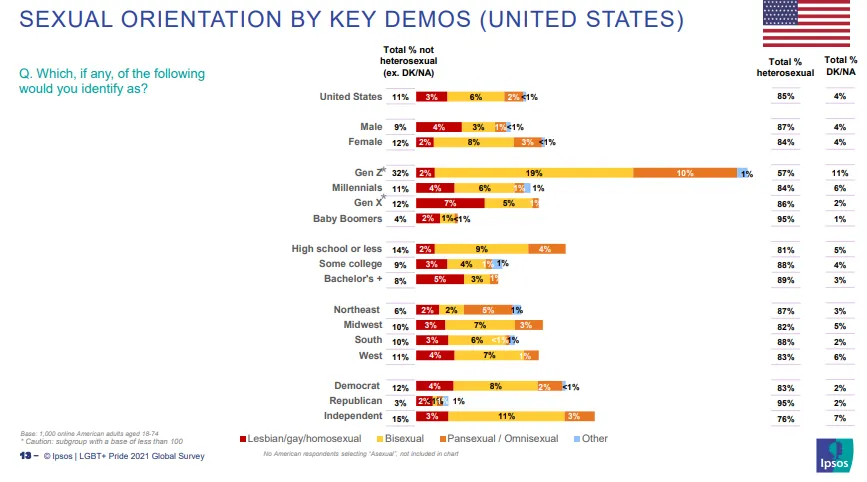
In this article, Arctotherium explains his theory for the rise of modern progressivism/wokeness based on memetic evolution. Basically, industrial prosperity and the rise of mass telecommunications, particularly social media in recent decades, produced an unprecedented memetic environment extremely favorable to memes that spread through “viral” transmission as opposed to “mitochondrial” transmission. Mitochondrial memes, which spread parent to child, tend to produce more functional people and societies than viral memes, which spread peer to peer, because the former tend to go extinct if they make their hosts too dysfunctional, while the latter doesn’t depend on their hosts thriving.
This, the author explains, is the reason wokeness arose and became the dominant ideology of the modern world. This is a severe problem because wokeness is “an ideology that valorizes and promotes every form of human dysfunction, from criminality to stupidity to mental illness to sterility to obesity,” and thus it could eventually bring about the “collapse of civilization, or possibly the extinction of humanity.” The solution, according to the author, would be the rise of a new religion or societal ideology that can replace wokeness, create functional people and societies, and preserve itself.
Briefly, I think modern prosperity and mass telecommunications have definitely played an important role in the rise of wokeness, but I think the author makes a big mistake in not taking into account genetics. More concretely, I think that there’s plenty of strong evidence that moral and political attitudes and other information biases are very heritable, and there’s also a lot of evidence that dysgenics explain a large part of the leftward shift of recent generations.
The rise and fall of “cultural evolution”
- Link to article
- Author: Joseph Bronski
- Date: 2023-10-04
- Source: Joseph Bronski (Substack)
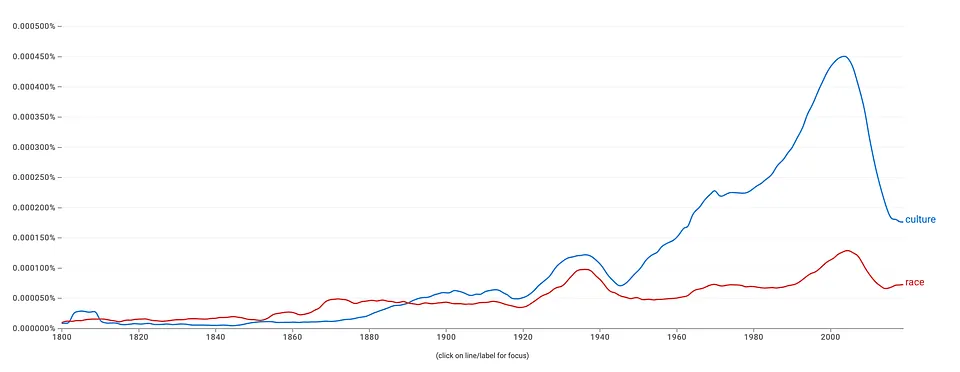
In this brief article, Bronski explains how and why the concept of “cultural evolution” arose, why it’s deficient and riddled with blank-slatist baggage from its origins, and why the focus should be on the unambiguous concept of “informatic transmission.” In the author’s own words:
Too many people give credit to the idea of “cultural evolution.” In this article, I question the validity of the concept of “cultural evolution”, starting with its historical origins. It has mostly served as a [pseudo]-scientific cudgel to advance the aims of blank-slatists. A tour of its first models reveals rampant fallacious reasoning and bad assumptions. The combination of this history, the bad assumptions baked into the concept, and the incoherency of the word “culture” lead me to conclude that the term and its baggage should be abandoned for a better alternative.
Fleeing Opportunity
- Link to article
- Author: Arctotherium
- Date: 2024-04-14
- Source: Not With a Bang (Substack)
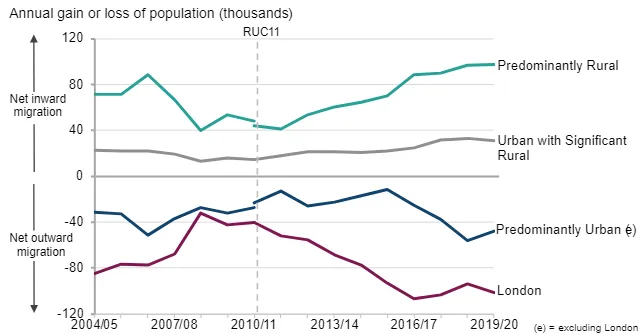
The author’s conclusions provide the best summary of the article, so I’ll quote it directly:
Immigration has countless effects on locals. It is impossible to enumerate and accurately measure all of them. The obvious way to check if immigration is beneficial or harmful is to see whether locals move towards them or away from them—and revealed preference is that, in Western countries, locals dislike actually-existing immigration so much that they are willing to take large pay cuts to escape it. In immigration-heavy countries, people move away from economic opportunity! This harms the national economy (especially when it is low-skilled Third Worlders driving out locals via behavior rather than housing prices), distorts the immigration debate, and has effectively destroyed one of the biggest pathways for upwards mobility in the 19th and 20th centuries. Internal migration away from productive areas should be a huge screaming red flag signaling to policymakers that the time has come for immigration restriction.
Axis of Evil: America’s Three Worst Presidents
- Link to video
- Speaker: Thomas J. DiLorenzo
- Date: 2024-07-28
- Source: Mises University 2024. Ludwig von Mises Institute.

This is the recording of the first presentation of Mises University 2024; I actually watched the original livestream on July 28th. 1 Thomas DiLorenzo, president of the Ludwig von Mises Institute, made his presentation about who he thinks were the three worst presidents of the United States and the things they did to earn such a negative distinction. I correctly predicted before the livestream started that the three worst US presidents would be Abraham Lincoln, Woodrow Wilson, and Franklin D. Roosevelt. Lincoln, Wilson, and Roosevelt were all bloodthirsty warmongers and tyrannical centralizers who were arguably the most pivotal in transforming the US government into the Leviathan welfare-warfare state it is today.
Footnotes
-
A day where certain events turned out exactly as I predicted, sadly. ↩